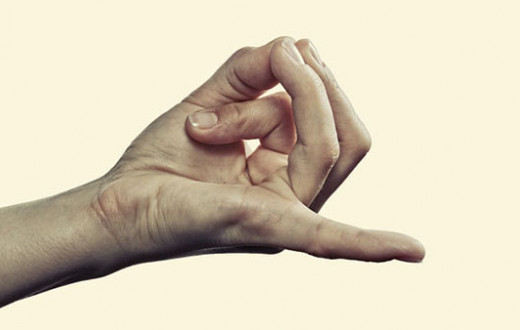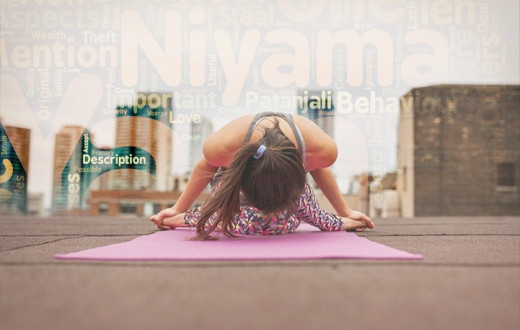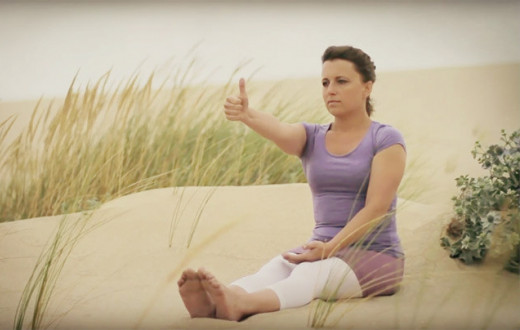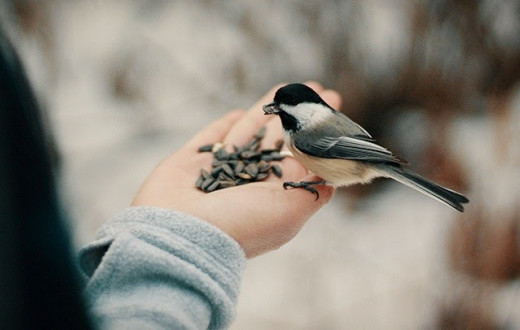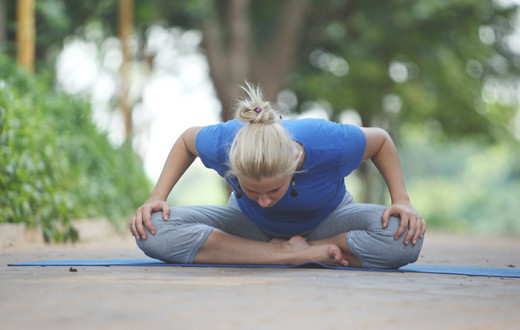By Elizabeth Herman | Posted: June 13, 2019
Yoga mudra (YOG-aa MOOD-raa): Another independent and subtle branch of yoga, Yog tatva mudra vigyan emphasizes very specific hand positions, known as mudras in Sanskrit. The word mudra is translated as “gesture,” “mark,” or “seal.”
In this seated posture, the practitioner assumes the adi mudra with his or her right hand, and holds it steady behind the back with the left hand around the right wrist. The torso, neck and head bend forward as far as comfortably possible. The lower back and gluteal muscles have a chance to stretch in this pose, and it relaxes the head and the neck. It’s also the final pose in Art of Living’s padma sadhana flow of postures.
Level of difficulty: Beginner
Step by step instructions
Sit in easy pose (sukhasana), lotus (padmasana) or half-lotus.
Bring the hands behind your back.
Place the right hand in adi mudra position, where the thumb turns across the center of the palm, the tip of the thumb rests at the base of the pinky finger, and all four fingers bend to form a fist that covers the thumb.
With the left hand, loosely grasp the right wrist.
Allow both hands to rest on the lower back.
Bend forward as far as you can, resting your forehead comfortably on the floor, a pillow or a block if possible.
Feel the stretch in the lower back muscles.
Slowly bring your body out of the posture, one vertebra at a time, head and neck coming up last. Release the hands once your spine is erect again.
Benefits
Adi mudra relaxes the nervous system, helps reduce snoring, improves the flow of oxygen to the head, and increases the capacity of the lungs.
Padmasana (lotus or half-lotus pose) improves digestion, reduces muscular tension, brings blood pressure under control, relaxes the mind, aids women during childbirth, and reduces menstrual discomfort.
Sukhasana (easy pose) improves posture, strengthens the back, improves concentration and focus, and promotes relaxation.
Precautions
Don’t use lotus pose if you have an ankle or knee injury
Don’t use easy pose if you have a knee or hip injury
Modifications and variations
If you have had recent surgery or injury to the hip, knee, or ankle, you can sit in a chair while practicing this pose. You won’t bring your head to the floor, but you will still experience most of the benefits.
Adi mudra, along with several other hand mudras, can also be practiced in any comfortable seated position with both hands on the knees, palms facing up, while taking long, slow ujjayi breaths.
If you are unable to overlap both your legs and sit in padmasana, you may also sit in ardha–padmasana (half–lotus pose) by placing one leg on the opposite thigh. Continue doing so until you feel flexible enough to progress to padmasana.
To increase the challenge, maintain balance in your hips by switching your bottom and top leg regularly.
Preparatory poses and follow up poses
Reclining body twist-- natrajasana (preparatory)
Seated half spinal twist-- ardha matsyendrasana (preparatory)
Butterfly pose | badhakonasana (preparatory)
Adamantine pose | vajrasana (preparatory)
Standing forward bend with feet apart | prasarita padahastasana (follow up)
Seated forward bend | paschimottanasana (follow up)
Alternate nostril breathing-- nadi shodena pranayama (follow up)
While a regular yoga practice can result in improved health, know that it is not a substitute for medical treatment. It is important to learn and practice yoga under the supervision of a trained teacher. In the case of a medical condition, practice yoga after consulting a doctor. Do you need information on courses? Contact us at programs@us.artofliving.org to find a Sri Sri Yoga course at an Art of Living Center near you.



